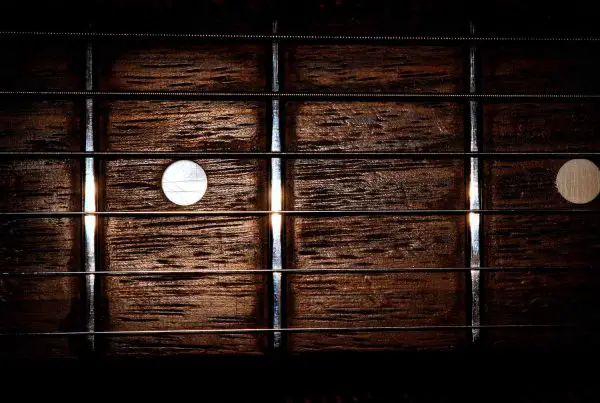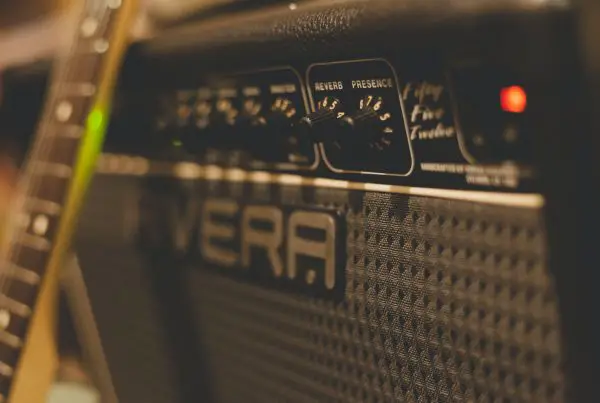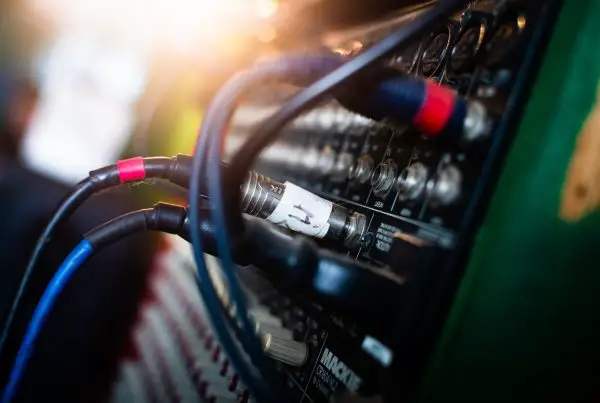The best guitar for shredding is Gibson SG because it has thin necks that are easier to navigate, you can easily access the highest frets and they have powerful humbuckers for distortion.
That said, The Gibson SG, Les Paul, Fender Telecaster and Fender Stratocaster are all popular guitars that have over time demonstrated their value, robustness, and outstanding playability for shredding. Even though they are well-liked, they are not all alike. The Gibson SG appears to be the finest guitar for shredding out of the four.
In this article, I’ll outline the differences between the four, explain why one brand is superior to the others in terms of shredding, and reveal the ideal configurations for you to shred on your guitar.
Once you finish reading this article, I think it’s also a good idea to learn about guitar tonewoods and which one is the best for you here: 6 Best Tonewood For Electric Guitars Compared!
Reviewing The Most Popular Guitars For Shredding
| Popular Guitar | Good For Shredding? |
| Gibson SG | Good for shredding.
It has thin necks and better upper fret access. |
| Gibson Les Paul | Not good for shredding.
It has a rounded neck profile which will make moving around the fretboard a bit hard when shredding. |
| Fender Telecaster | Not good for shredding.
Single coil pickups are too clean and not the best for shredding |
| Fender Stratocaster | Acceptable for shredding.
Neck is thin enough for shredding but they have passive single coil pickups which make the sound not as powerful as that of a humbucker; which is best for shredding. |
Please take note that for a good shredding guitar, you will need thinner necks, humbucker pickups, wider radius fretboard, longer scale length, and other shredding-specific features that I will also discuss in this article.
Based on this, we will examine these four well-known guitar brands to determine which offers the most and the greatest characteristics that support shredding.
1. Gibson SG

Gibson SG
Among the most popular guitars, the Gibson SG is the best guitar for shredding because of its thin necks, easy access to high frets, strong humbucker pickups and clear mids.
The Gibson SG features clear mids and highs, and because of its clearer mids, heavy metal musicians like Iron Maiden, AC/DC, and Black Sabbath prefer it. Though it’s also able to perform in nearly any musical style, such as funk, blues, and classic rock.
Starting with Gibson’s renowned PAF pickups, the SG has a variety of humbuckers (perfect for shreds), offering players tremendous control over the guitar’s tonal characteristics.
The design of Gibson SG makes it easier to shred because of the thinner neck, it plays surprisingly quickly for bends, arpeggios, and other guitar-playing techniques.
Additionally, its devil horn shape and neck bolt placement on the 22nd fret ensure great access to the upper frets. Hence, shredders are advantageous.
The SG works nicely as a shred and metal guitar. They offer many models with hot pickups as standard equipment, have quick necks, and simple access to the high register.
In conclusion, whether you’ve been playing the guitar for a long time or are just starting, you can be confident that a Gibson SG will be the ideal instrument for you. Due to its ideal weight and height, it is fundamentally a very playable guitar that feels extremely natural.
2. Gibson Les Paul

Gibson Les Paul
The Gibson Les Paul is not good for shredding because it has a larger and rounder neck profile. When holding them, their thicker neck may feel a little heavy and difficult, especially if you have little hands.
This can make it challenging to quickly transition your fingers from the low strings to the high strings on the fretboard. Once this happens, shredding becomes challenging. For this reason, the necks of most shredder guitars are extremely thin and flat.
Second, the typical fret sizing in Les Paul places more restrictions on your ability to fret the strings and requires greater accuracy. If you don’t have jumbo frets, you’ll have to be more accurate. This restriction limits speed hence a necessity for shredders.
Finally, the fact that the neck finish is often glossy implies that it has a lot more grip. This can slow you down if you’re trying to quickly move your fingers up and down the fretboard since it makes it easier for them to become stuck on the back of the neck.
3. Fender Telecaster
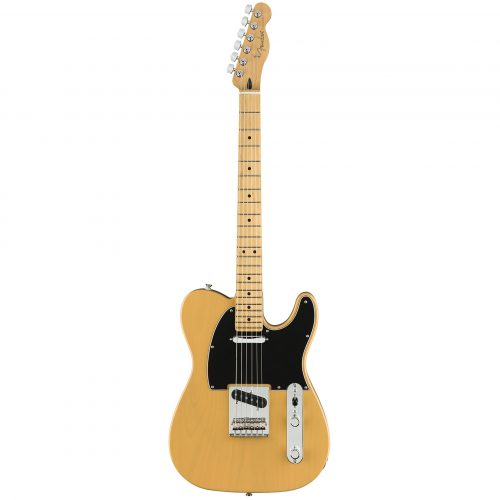
Fender player telecaster
You may shred on a Fender Telecaster. However, teles are preferable for blues, jazz, funk, or fusion – not mainly for shredding. With a lot of gain, it doesn’t sound well, and the tone might be somewhat poor.
Teles are not ideal for shredding for a variety of reasons:
- Classic Telecasters use single coil pickup which have a very distinct “twang” to them, which sounds wonderful cleanly but is less common for heavy musical genres. Humbucker pickups are frequently preferred for heavy rock and metal-based genres for the heavier distortion.
- Fender Telecasters have glossy necks that can be sticky and be less suitable for shredding.. To lessen this look, many players will need to sand off the finish on the back of the neck.
Teles play quickly, but their guitars are not tuned for metal. They are not suitable for crushing metal. Not with such a bridge and intonation, at least. There are other guitars that are more suitable for shredding.
4. Fender Stratocaster
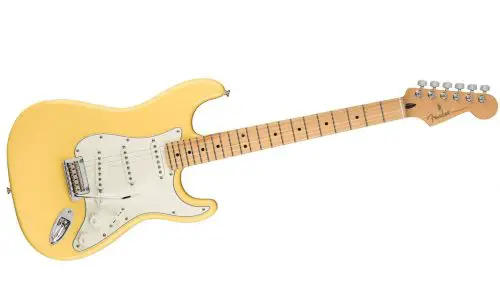
Fender Player Strat
Strats are not the best for shredding but it’s acceptable. Strats are more prone to feedback and buzzing. Additionally, the tones produced by strats are too bright and twangy for shredding.
The fender strat comes with passive single-coil pickups, which aren’t as powerful as active humbuckers as they have a relatively low output which is best for shredders.
That said, The Strat’s neck is fairly swift even though it isn’t as thin as an Ibanez or Jackson that is made for shredding. That makes playing rapid riffs, navigating the fretboard, and shredding rather simple.
Second, Strats have a contoured double-cutaway body. This contoured body makes it comfortable to sit and stand with. The double cutaway design also makes it simple to reach the top frets. Hence enhancing speed.
Furthermore, playability is crucial when it comes to performing the complex riffs and solos that are frequently featured in metal music. In that regard, the strat’s ergonomic design is advantageous because most players find their lightweight bodies to be very comfortable to play on.
If you’re skilled enough, you can shred on anything. But, as a beginner to shredding, I would advise something other than a strat.
Also Read: Thickness Of Guitar Necks Compared: (Strats Vs Les Pauls)
Best Configuration For Shredding: What To Look For
If you are looking to shred, here are the configurations you need for your setup.
| Neck Size | Thin necks are known to be the best since it encourages fast playing. But I say, what’s comfortable to a player is best. |
| String Gauge | Recommended string gauge is 0.9/ 0.8. Though some people make do with 0.10/ 0.11 and it works just fine. |
| Pickup | Humbuckers (HSH) specifically. |
| Tuning | Tuning Lower – Half a step-down |
| Pick | Thick pick (3.5mm) |
| Amp Settings | Bass around 6-7, Mids around 2-4, Highs around 6-8. |
Neck Size
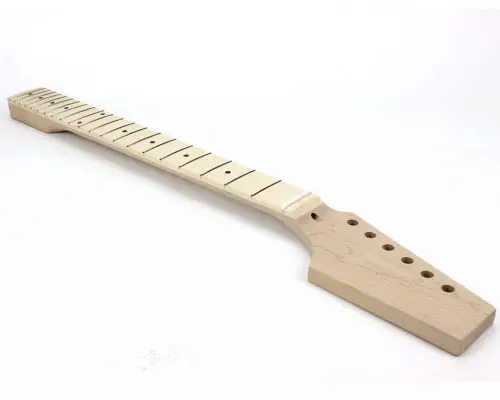
Thin and comfortable necks are great for shredding.
Since shredding demands more speed, many people believe that guitars that have thinner necks are more suitable.
In my opinion, fast playing is achievable if the hand is in the right posture and is at ease. Speed has little to do with neck thickness. All that matters is comfort.
So it is untrue that slender necks are best for playing quickly. They are just perfect for people who want thin necks. Many of the most well-known shredders utilize guitars with thick to medium necks and standard string gauges, and they sound great.
For me, playing quicker requires a slightly thicker neck because it gives me a good grasp and the stability I need to play legato more effectively.
But, on a tiny neck, I have to use between 10% and 15% of my energy just to keep my hands from falling off the neck. Ultimately, It depends on the person’s preferred neck thickness.
Also Read: Why Electric Guitars Have Thin Necks: Is It Easier To Play?
String Gauge
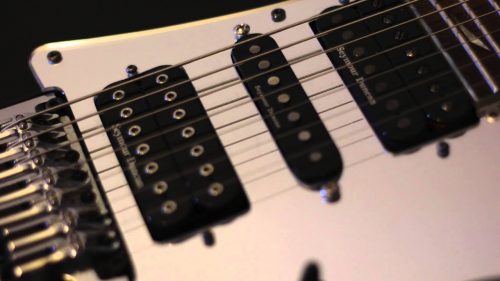
Having light gauge strings will help with shredding. 0.9s will do the trick when it comes to bending, legato, tapping, sweep picking, and generally playing fast.
This is so because even though lighter strings tend to sound brighter and are more prone to breaking, they are easier to bend on an electric guitar.
I would advise using the 0.9 gauge Ernie Ball Super Slinky Nickel strings (favoured by shredders the world over). If you want to play faster. They are by far the most popular for playing fast and for shredders as they are both lights but can easily carry a bottom end.
The majority of shredders employ 009 or even 008 sets (such as Malmsteen or Holdsworth), but some also employ 010 or even 011 sets, which likewise produce great results. Lighter strings, such as 0.09 or lower, are typically preferable.
Also Read: Heavy Vs Light Guitar Strings: Sound, Playability & Tuning
Pickup
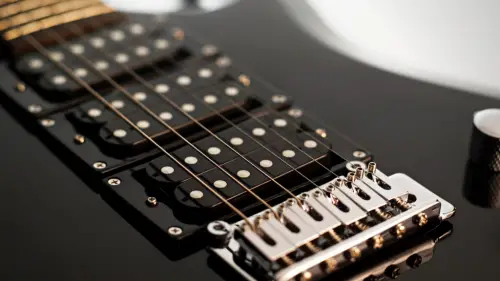
Humbuckers are the best pickup type for shredding. This is because they offer a hum-free greater output and the abrupt transients brought on by quick, aggressive picking are transmitted less noticeable than with single coils, particularly at the bridge pickup.
An ideal pick-up configuration for shredders should be the HSH. HSH is the most versatile combination ever. One can use the single coil or convert it into an H-H. Since you can utilise distortion and shred cleanly with the neck pickup and it’s simpler to pinch harmonics, it’s much better.
So, adding a single coil to the center position (HSH) will therefore provide you more versatility. The single coil’s roundness helps to tidy up the situation.
Also Read: Does Guitar Pickup Matter? Sound Difference On Type & Price
Tuning
Some people can shred on a conventional guitar tuned to 11s and on a guitar tuned to 08s, which is tuned down a whole tone. For me, I find it best to tune down a half step.
Tuning alters string tension making it harder or easier to play. Since there is less string tension and you may achieve much more precise bends when playing shred, tuning down would be excellent. It’s also much simpler to fret, therefore simpler to “shred.”
Less tension is better if you want gentle bends. Go with extra tension if you want to strengthen your fingers and prevent your strings from fluttering across the fretboard. Although they are the extremes, it all comes down to preference.
Pick
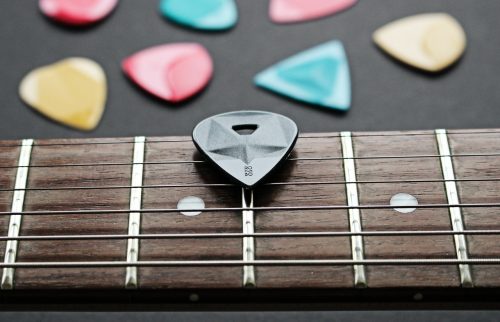
For shredders, the most popular picks in terms of shape are pointed, teardrop-shaped picks with a diameter of roughly 3.5mm. That said, picks can be used any way you like.
It is crucial to select your plectrum’s thickness and form intelligently. You should constantly experiment to see what works best for you.
High precision is easier to achieve with tapered plectrums in the 1mm range, so they shouldn’t be too thin. This could be the reason why shredders specifically prefer the “Jazz III” from Dunlop or Hawk Picks.
Amp Setting
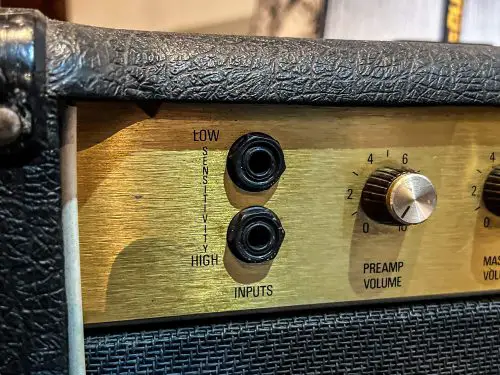
For shredding, use this confirmation on your amp:
- Bass at about 6-7
- Mids at about 2-4
- Highs at about 6-8.
Scooping the mids is the term used to describe how shredders typically prefer their tone to be closer to heavy metal. Setting your amp eq in the following way is a nice place to start that is not too extreme.
However, the “Extremely Scooped Mids on a Boss EQ pedal” guitar configuration continues to be the finest for shredding.
Also Read: Clean Distortion: What Is It & How To Get (5 Improvement Tips)
FAQs
Can You Shred on Acoustic Guitar?
You can shred with an acoustic guitar but it will be more difficult. Full-on speed metal, solos, and balls-to-the-wall shredding are the main components of shredding, but these elements are difficult to achieve on an acoustic guitar since it lacks the same frets as flat-tops, a huge cutaway, and effects.
When it comes to acoustic shredding, alternate picking is used more frequently than legato. Although many genres—especially bluegrass—use pull-offs to open strings and short slides. Crosspicking and tremolo picking are two other very popular approaches that can also be used.
Therefore, even though it will take some work, all it takes is hard work and talent, motivation, and discipline to succeed. Furthermore, I should caution you that it won’t sound as good as utilising the same shredding technique on an electric guitar.



